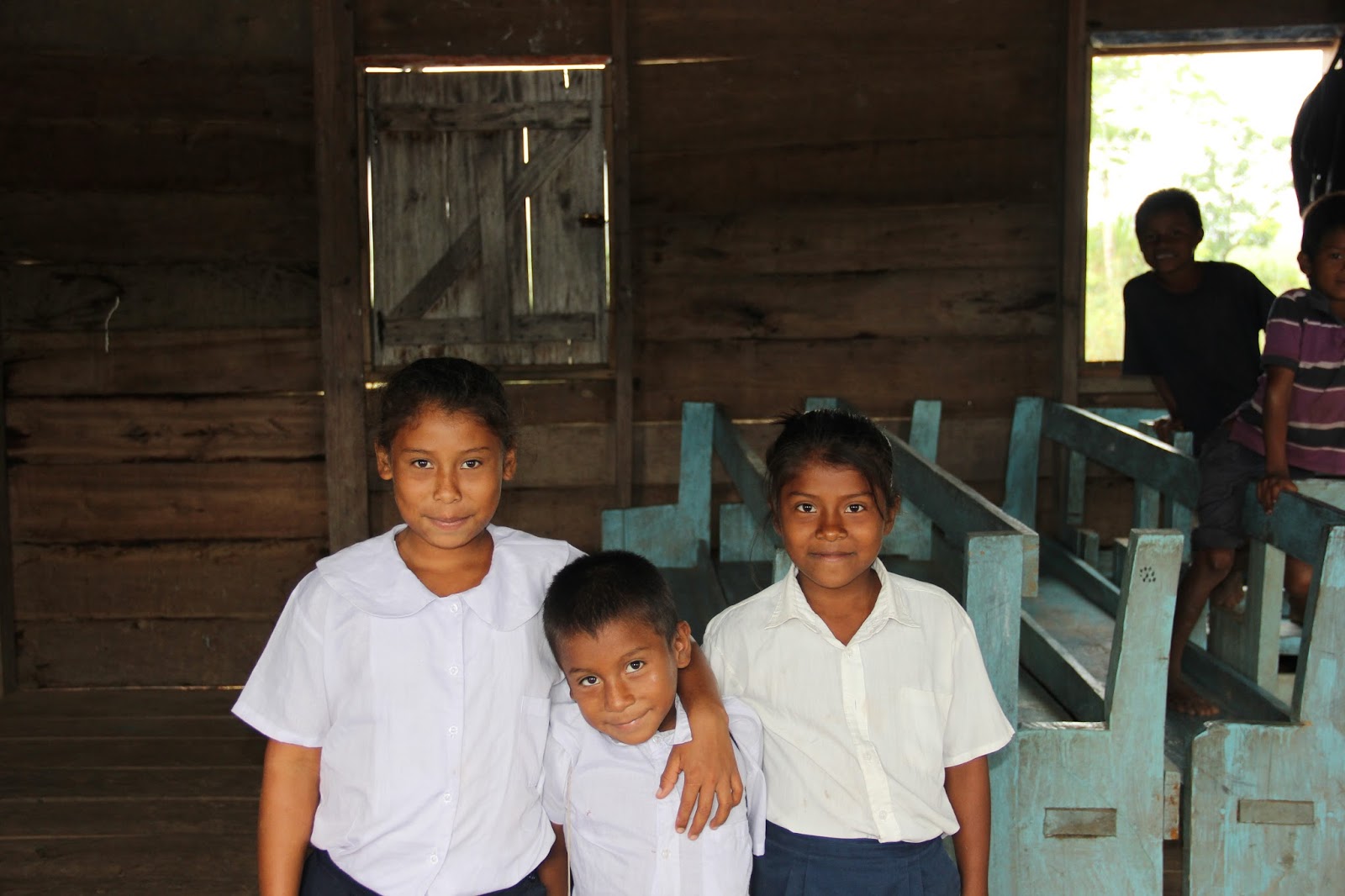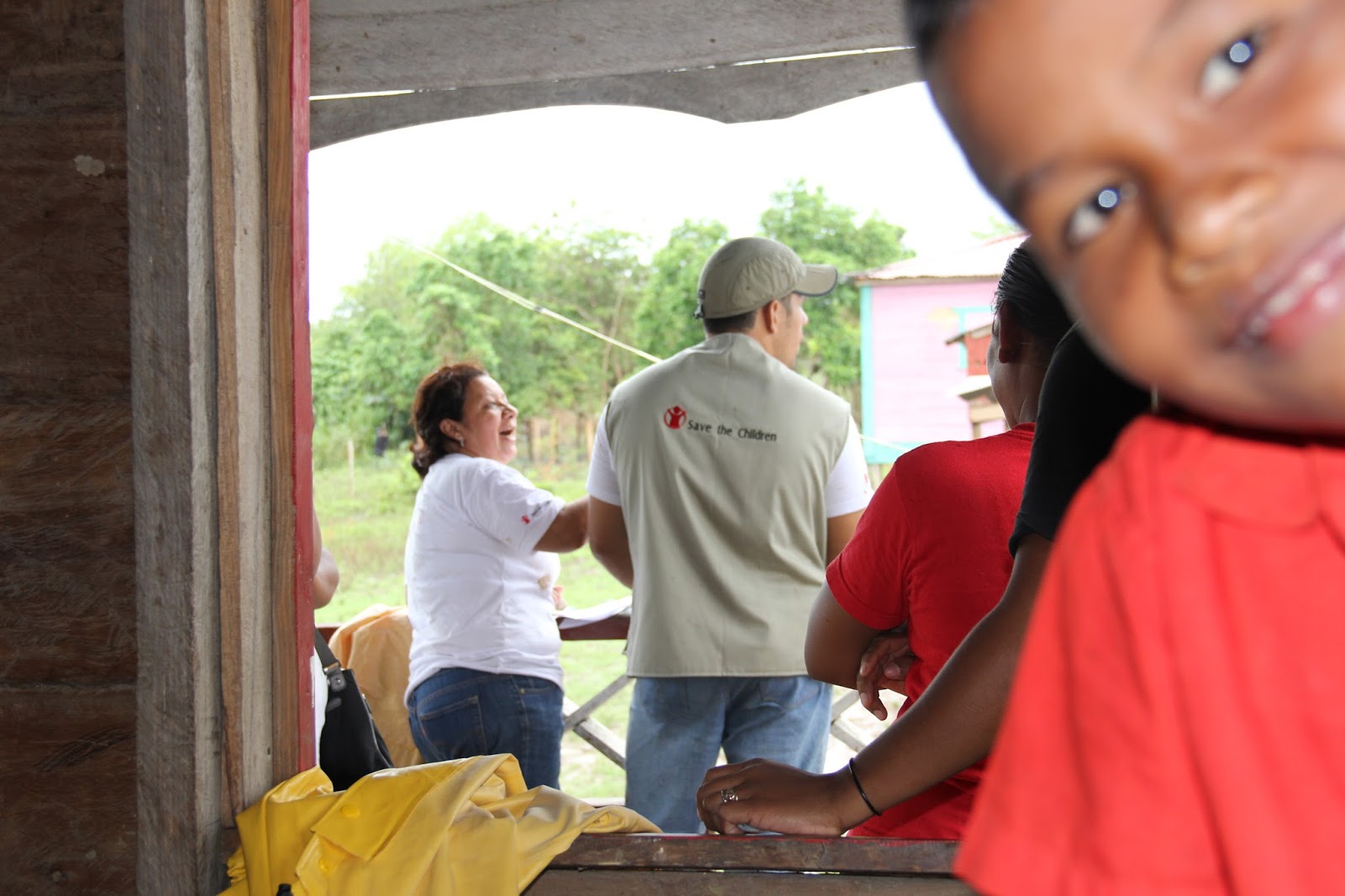We were a team of five people: the team leader -expert in this area-, two technicians -experts in water and sanitation-, a translator of Spanish-Miskitu, and me -communication and advocacy department-. We are based in Alamikamba, but bought the food in Siuna, a city near
to Alamikamba, because the prices were better, despite we had to pay for transportation.
We store the food bags in the office of Save
the Children in Alamikamba –where we also slept-. Every morning, we carry a
boat with the aid for the communities that we would assist. We already knew how
many households had per community, thanks to the census we did before we
started the distribution process.
We started the distribution on the most remote communities from Alamikamba the second week.

We use two boats to serve the greatest number of people per day. All the staff traveled by speedboat but one of the technicians, who
was traveling in other with the food supplies. This second boat was much slower
due to the weight of the cargo.
We used to start at 5 or 6am; distances are large
and from 6pm is night in Nicaragua, so we have forbidden traveling across the
river for safety.
We arrived first, so we could start the
process: with the census, we gave food ticket to one person per home, who
told us how many people live in the same household, ages and sex. This process
used to take two hours, depending on the size of each community. Then, the boat
with the load came, and the bags were distributed to the people with a ticket.
- First day: Auhya Pura, Tuburus and Bethel. We spent almost 2 hours by speedboat. The slow one arrived 5 hours later. Bethel was the last one. The conditions in these three communities are very poor. 12.08.13
- Second day: AukaMango and Dos Amigos. We realized that the communities that are further away of Alamikamba have worse conditions. The problems are more severe between the populations closer to the Atlantic coast. 13.08.13.
- Third day: Galilea, Buena Vista and Limbaica. These communities are closer to Alamikamba and we could appreciate that the conditions are better. 14.08.13
- Fourth day: Klarindan and Ladricola. The situation is also better. 15.08.13
Total of beneficiaries
Community
|
Houses
|
Children
|
Adults
|
Total
|
Auhya Pura
|
31
|
113
|
84
|
197
|
Tuburus
|
18
|
62
|
48
|
110
|
Bethel
|
33
|
139
|
91
|
230
|
AukaMango
|
46
|
153
|
97
|
250
|
Dos Amigos
|
68
|
242
|
167
|
409
|
Galilea
|
54
|
168
|
136
|
304
|
Buena
Vista
|
54
|
172
|
129
|
321
|
Limbaica
|
56
|
152
|
153
|
305
|
Klarindan
|
40
|
88
|
92
|
180
|
Ladricola
|
74
|
190
|
178
|
368
|
Total
|
474
|
1479
|
1195
|
2674
|
General impressions
Most communities have the same problems, though are more severe near the coast.
- All the wells are contaminated; in Bethel and Dos Amigos there are none.
- In every community, there are sick people from drinking dirty water. But there are no health post in almost any community.
- In most, mud and sludge flood everything. The hygienic conditions –and the latrines- are terrible. In addition, there are animal droppings everywhere, including around wells and schools.
- The quality of education is not good; children cannot even finish elementary education in most communities. In none of them they can study high-school.
- Almost anyone can write; most of the beneficiaries have signed with the initials of their names or fingerprint.
- No birth control at all; numerous families living in poor conditions. We have also realized that there are only 97 people older than 60 years old (1197 adult population in total).
- There is no good communication system or emergency alert; the most dangerous is when there is none.
- People have lost most of their crops and this aid only solves the problem for a week. In my opinion, the situation will be worst when the food runs out, because many really have not anything else.

Children are very curious and tender in all
communities. Although they do not speak Spanish, they approach me; teach me the
school, like to see the photos I do. I'm the only non-Nicaraguan member of the team
and many people ask me where I come from, where is my country or if I miss my
family.
People who talk to me are very polite and
respectful. The teacher of Dos Amigos
asked me "are you all right here? Do not mind being surrounded by so many different people to you? I have seen that you speak with a lot of
persons. Sometimes when foreigners come to work with organizations, they do not want to leave the ship or talk to anyone, only with their partners ".
I can imagine how
I can imagine how uncomfortable you feel when someone does not want to approach you for any reason. We have not had any problems in the communities, quite the opposite. They have always been hospitable and friendly.
We are very expected; since the boat is approaching, many people come out to welcome us. Furthermore, many people wait until we went to say goodbye.I can imagine how uncomfortable you feel when someone does not want to approach you for any reason. We have not had any problems in the communities, quite the opposite. They have always been hospitable and friendly.
.JPG)





.JPG)































